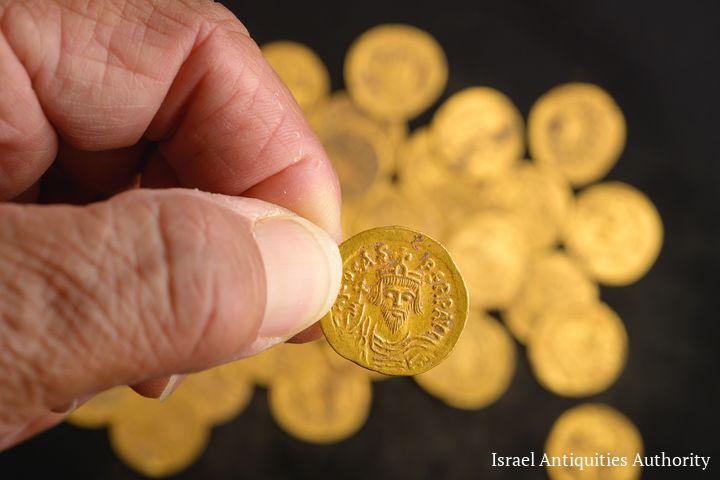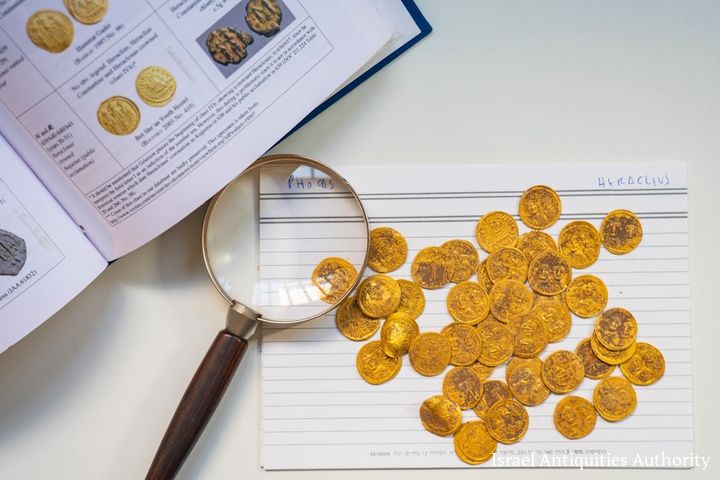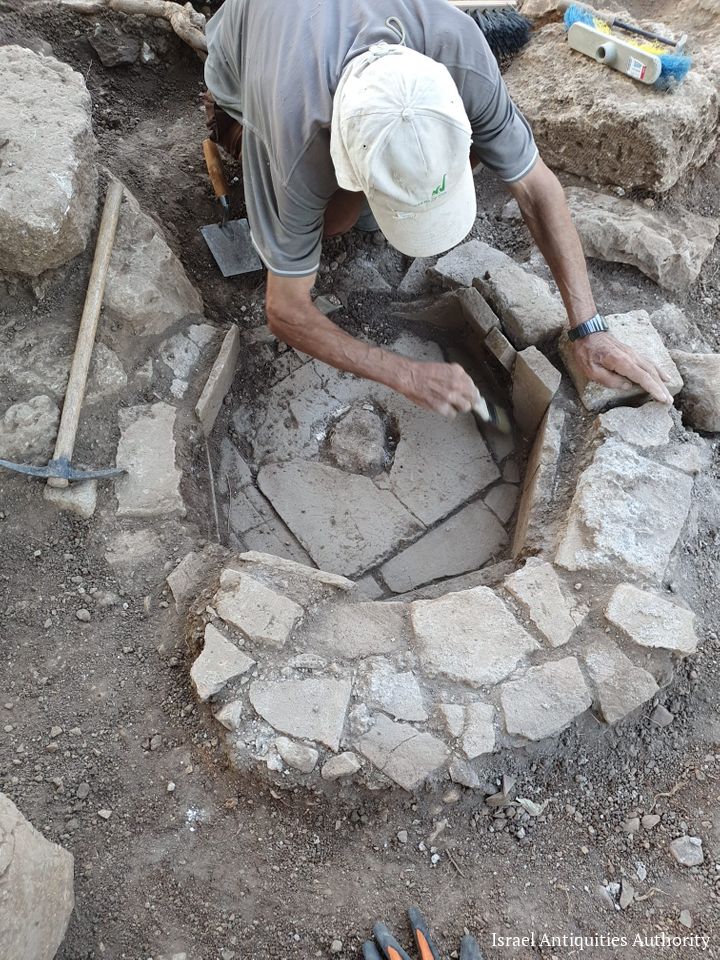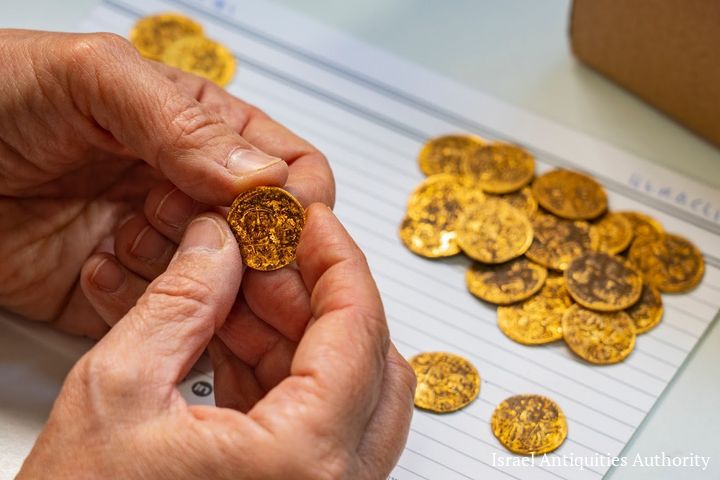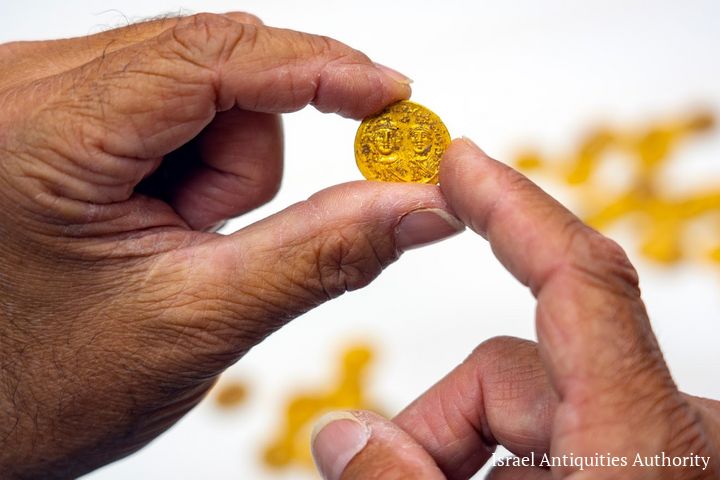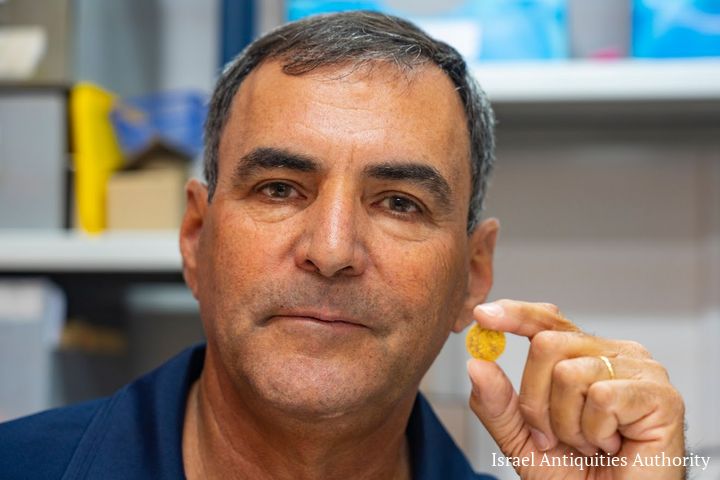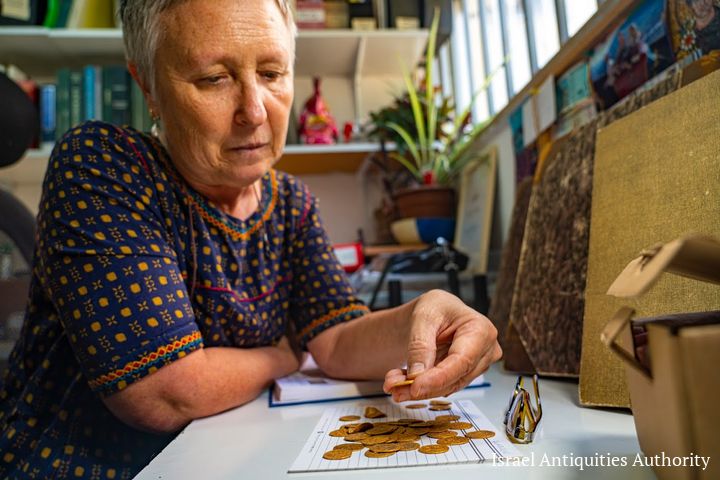The hidden coin hoard provides evidence for a dramatic moment in the history of the country – the Muslim conquest of the Byzantine Empire and the establishment of the Umayyad Caliphate. Israel Antiquities Authority archaeologist, Dr. Yoav Lerer: “The person who hid the coins between the stones of the wall, probably fled, hoping to later retrieve his property, but he failed to return.”
A treasure of 44 pure gold coins was recently discovered in archaeological excavations carried out by the Israel Antiquities Authority at the site of Paneas (later known as Banias), within the Hermon River Nature Reserve. The excavations, funded by the Israel Electric Corporation, were carried out prior to connecting the adjacent Druze holy site Maqam Nabi Khadr to the national electricity grid.
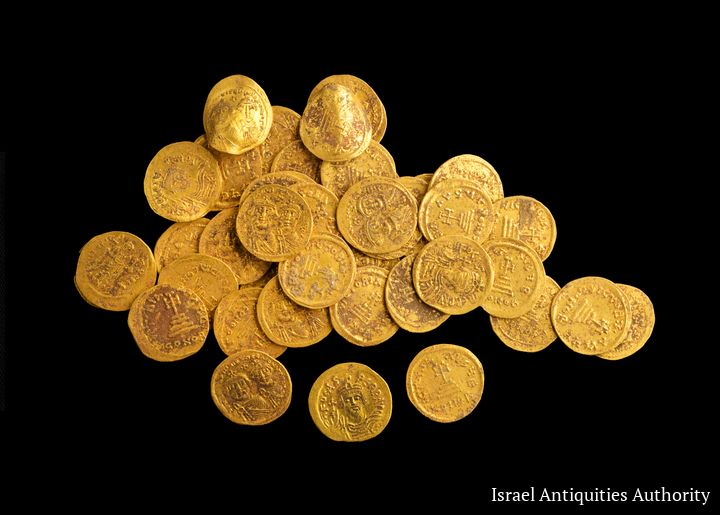
Dr. Gabriela Bijovsky, Israel Antiquities Authority numismatic expert, examined the coin hoard, composed entirely of gold solidus coins, and identified some coins of Emperor Phocas (602–610 CE), and many coins minted by Emperor Heraclius (610–641 CE). The latest coins of Heraclius date the coin hoard to the time of the Muslim Conquest of Byzantine Palestine in 635 CE.
According to Dr. Yoav Lerer, Director of the excavation on behalf of the the Israel Antiquities Authority, “The coin hoard, weighing about 170 g, was concealed within the base of an ashlar stone wall at the time of the Muslim conquest. The discovery reflects a specific moment in time, when we can imagine the owner concealing his fortune in the threat of war, hoping to return one day to retrieve his property. In retrospect, we know that he was less fortunate.” Lerer adds, “The discovery of the coin hoard may also shed light on the economy of the city of Banias during the last 40 years of Byzantine rule.”
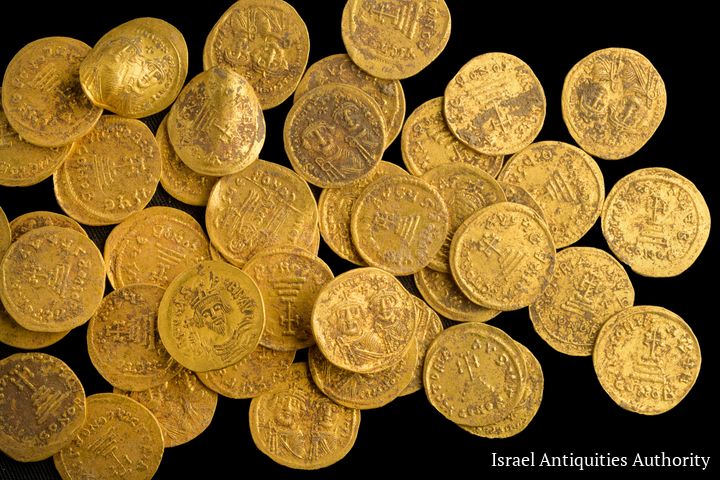
“Most of the coins are of the Byzantine Emperor Heraclius,” adds Dr. Bijovsky, “and what is particularly interesting is that in his early years as emperor, only his portrait was depicted on the coin, whereas after a short time, the images of his sons also appear. One can actually follow his sons growing up – from childhood until their image appears the same size as their father, who is depicted with a long beard.”
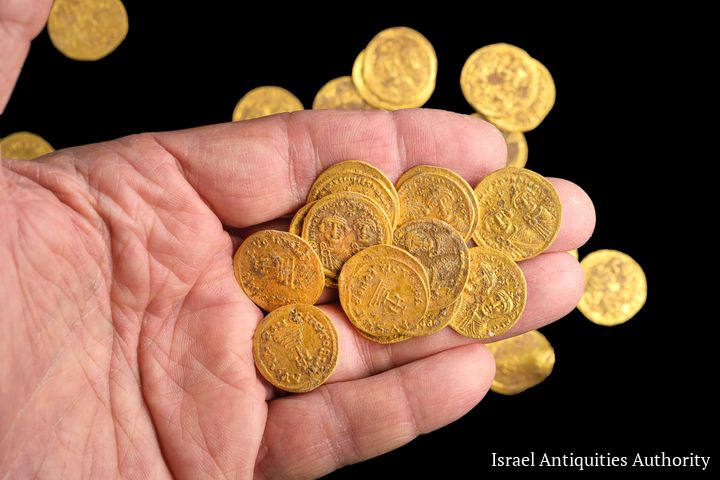
In the excavation, which took place in the northwestern residential quarter of the ancient city of Banias, the remains of buildings, water channels and pipes, a pottery kiln, bronze coins, and fragments of many pottery, glass, and metal artifacts, were found. The finds date to the end of the Byzantine period (early seventh century CE), and to the early Middle Ages (11th–13th centuries).
Banias, now a National Park, is an archaeological site that was settled around a large spring in several periods, first established by Canaanites, who dedicated a shrine to the god Baal. In the Hellenistic period, Banias served as a cultic site to the god Pan (from whence the original Greek name of the site). The settlement reached its peak in the Early Roman period, when Herod the Great, and his son Philip II, entirely rebuilt the city and named it Caesarea Philippi, in honor of the Roman emperor Augustus.
According to Christian tradition, Banias gained fame as the place where the Apostle Peter proclaimed Jesus to be the Christ, and Jesus gave Peter the keys of the kingdom of heaven. In the Byzantine period, a church was built next to the spring. In the Crusader period, in 1129, the Crusaders undertook the fortification of the city to make it a military base from which to attack and conquer Damascus, but this was short-lived as the Moslems conquered the city in 1132 CE.
According to Eli Escusido, Director of the Israel Antiquities Authority, “The coin hoard is an extremely significant archaeological find as it dates to an important transitional period in the history of the city of Banias and the entire region of the Levant. The Israel Antiquities Authority, together with the National Parks Authority, will work together to exhibit the treasure to the public.”
Raya Shurky, Director of the National Parks Authority: “The Banias Nature Reserve, endowed with its unique nature and landscape, does not cease to surprise us from a historical-cultural point of view. The gold coin hoard is on a par with the Byzantine Church, possibly the Church of St. Peter, that was recently discovered. The finds include the remains of a mosaic floor and a stone engraved with many crosses, indicating that Banias became a Christian pilgrim site. The church, that was damaged in an earthquake that struck the north of the country, will soon be exhibited to the public visiting the nature reserve.”
